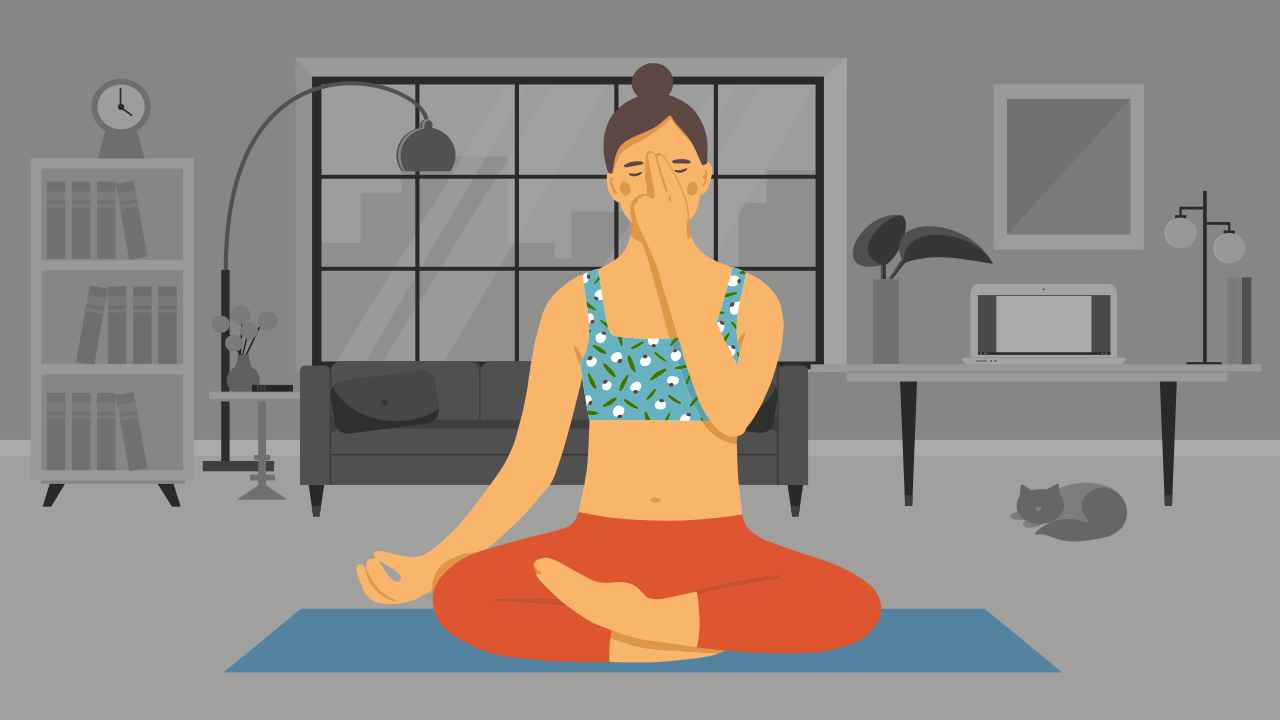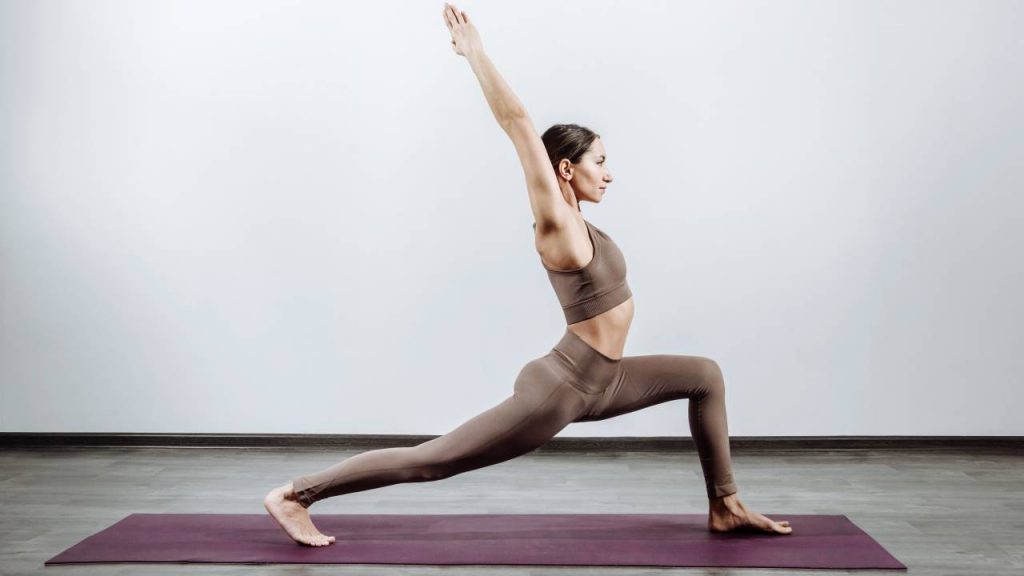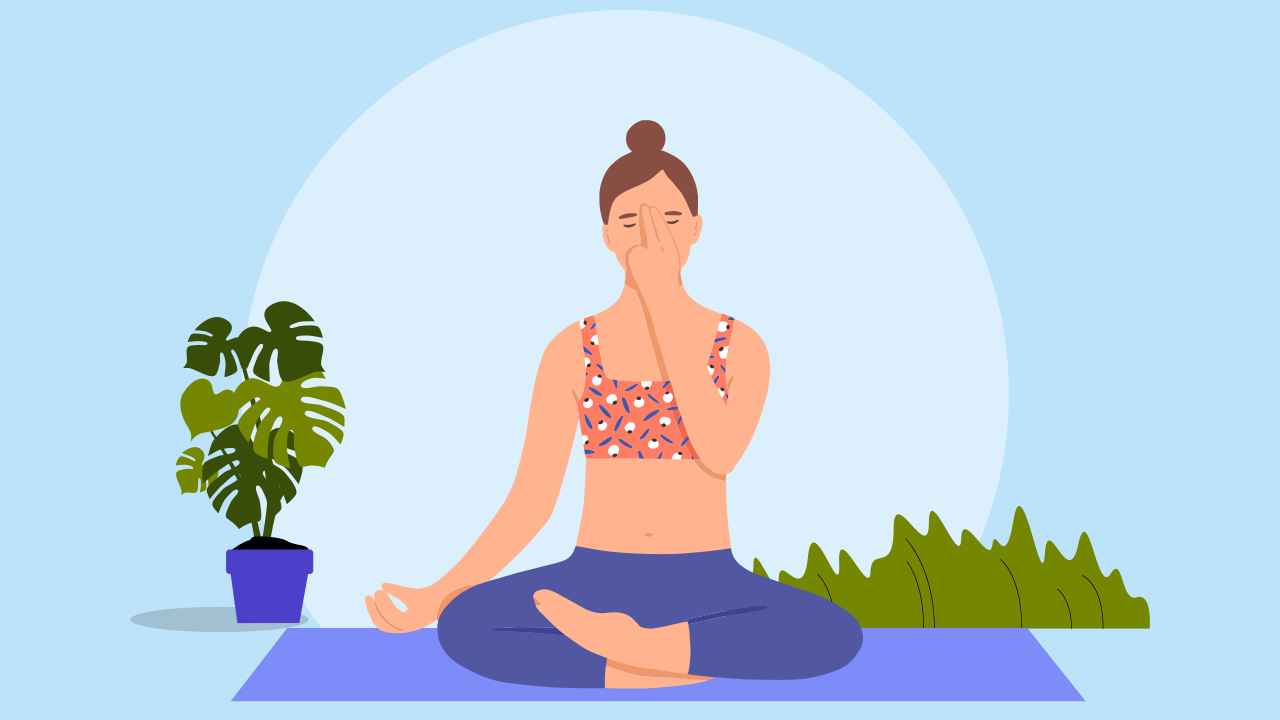
What Does Yoga Do to Your Body?

Yoga is an ancient science that goes back to approximately 3000 BC. While the beginnings might have been triggered by a spiritual quest, today, most of us approach the discipline for its physical and physiological benefits. So, let us understand how daily practice impacts our bodies and what are the plus points of yoga workout for weight loss.
It improves flexibility

Yoga asanas are synonymous with flexibility. Anyone who approaches yoga aims to improve their flexibility. But why is flexibility important? Flexibility correlates to the range of motions (ROM) your body makes. Having a flexible body protects you from various physical injuries caused by stiffness or tightness in your individual muscles or joints. Asanas improve the functioning of your muscular-skeletal system on the physical level and reduce the rigidity of the mind on a mental level.
Yoga asanas, when coupled with a rhythmic breathing pattern, impact the deep muscles of your body. It is said that with continued practice of asanas, you may experience the muscles and connective tissues surrounding the bones and joints becoming loose, thereby increasing the ROM. Studies show that this could be why yoga workout for weight loss is associated with reduced aches and pains.
Stretching is one of the most useful techniques adopted by yoga practitioners to achieve the preferred flexibility and provide relief from pain. The key is to start slow, begin with simple asanas before moving to advanced. Flexibility and strength always go together. One is incomplete without the other.
It builds strength

It is a common misconception that a daily yoga workout for weight loss does not build strength. This is because we align strength with something bulky and ripped, someone who lifts and benches. Although yoga may not vouch for a chiseled beach body, it definitely can get you a stronger and healthier one.
Yoga helps build muscle mass, maintain muscle strength, and tone your entire body. During yoga, the joints are taken through their full range of motion, thus reducing the risk of injury. Muscle endurance is particularly increased by holding the same pose for a prolonged time. You train to lift your own body weight. Managing your own body weight requires a lot more skill, time, and determination.
Through an array of postures, yoga asanas work on your muscles and mind. It is in the latter, where the real strength lies.
It protects the spine

The spine is of utmost importance in yogic literature. It is said to have dormant stores of energy, ie, chakras that help in spiritual advancement. It runs vertically, supported by abdominal and back muscles on either side. Various yoga asanas work on strengthening these muscles to keep the spine upright and well supported.
Evidently, stretching and strengthening the muscles of the back and lower extremities through physical postures aids in managing lower back pain. Yoga also reduces your stress through meditation and breathing exercises, contributing to an overall reduction of lower back pain and related symptoms.
For the spine to remain in optimum condition, the mobility of joints is crucial. Twisting motions help restore the spine’s natural range of motion, and stimulate circulation in areas surrounding the spine.
It corrects posture

Most bad postures are the result of a sedentary lifestyle. If you find yourself hunching forward multiple times a day, it may misalign your spine, neck, and shoulders. Postural correction is very important as our body is designed to be in a certain way to be able to function smoothly. Improper posture also leads to undue pressure on the joints, thus making them prone to injuries. A proper posture is when the weight is equally distributed throughout your body.
This is where yoga comes into play. Power yoga workouts for weight loss revolve around the concepts of awareness and balance, and aim at instilling these concepts through the practice of asanas.
Stretching is an excellent remedy for fixing incorrect postures. Poor postures are a result of your body always moving in one single plane (for example, you always bend forward during the major part of the day, with rare incidences of you bending backward). In yoga asanas, you bend forward and back, up and down, clockwise and anticlockwise, stretching your body in all directions.
Reduces aches and pains

The Buddha has said that where there is life, there is suffering. We all have experienced pain in some form or another, be it physical or mental. Yoga aims to cease this endless cycle of pain through Samadhi. Asanas are a good head-start in the direction.
While performing asanas, a wide range of movements squeeze and soak areas of cartilage (soft-connective tissues between joints) that are not used often. It brings fresh nutrients, oxygen, and blood to the area, preventing conditions like arthritis and chronic pain. Asana, meditation, or both reduce pain in people with arthritis, fibromyalgia, carpal tunnel syndrome, migraine, lower back pain, and other chronic conditions.
In asanas, you should always make modifications as per your need, as you do not want to harm your body. Breathing is a pivotal tool that will help you communicate with your body.
It stimulates blood flow

There is a common misconception that it is only through inversion practices in yoga, such as headstands, that one may reap the benefits of improved circulation. While it is true that the inverted poses increase the flow of blood towards the brain by relaxing the sympathetic nervous system, actions such as twisting, bending, stretching, and inverting also help compress and decompress veins in your body, to improve blood circulation. Fresh, oxygenated blood is supplied to the vital organs, leading to their optimal functioning.
A study has found significant evidence of the impact of yoga on the cardiovascular system and metabolic health. Better circulation will eventually lead to greater cognitive functioning, higher energy levels, and healthier skin.
It maintains a healthy digestive tract

A healthy gut is synonymous with a healthy life. Your lifestyle has a direct impact on your digestion.
Yoga, being holistic in nature, approaches problems of the digestive tract with its two tools — ahara (yogic diet) and vihara (asanas and pranayama). The yogic diet focuses on the quality, quantity, and time intervals at which food is consumed. It is paired with asanas, which strengthen and tone the abdominal muscles by compressing the stomach, making it stronger so as to digest food better.
A study confirms that ahara (food) and vihara (recreation) aid in the management of chronic gastrointestinal problems by correcting metabolism and promoting healthy bowel movement.
Regular practice of various asanas, pranayama, and kriyas form the building blocks of digestive and general health.
It improves lung functioning

The importance of breath is nowhere stressed as much as in yoga, where body and breath move in unison. Yoga believes that it is through the breath that prana (bio-energy) moves in our body.
It is widely known that the regular practice of pranayama improves the supply of oxygen in your blood. Combined with asanas, the elasticity of respiratory muscles (namely diaphragm, intercostal, and clavicle) is maintained by five movements — forward bending, backward bending, lateral stretching, axial, and medial torsion. This leads to better absorption of oxygen.
Yoga also has shown considerable improvement in patients with asthma and other respiratory diseases. Yogic practices may improve lung function and prevent severe cardio-respiratory complications in the future.
The benefits of practicing full body yoga workouts are endless. These exercises promote your holistic wellbeing, and can go a long way to ensure physical as well as mental fitness. So, get started today!
References
1. Yoga for pain relief. Harvard Health Publishing. 2015; published online Apr. https://www.health.harvard.edu/alternative-and-complementary-medicine/yoga-for-pain-relief (accessed Feb 18, 2021).
2. Bhogal RS. Yoga & Mental Health & Beyond. Pune: Kaivalyadhama SMYM Samiti, 2013.
3. Satani KG, Raghvani H, Raghvani K. Role of Yoga in gastro-intestinal problems w.s.r. to Constipation (Vibandha) in geriatrics. Journal of Ayurveda Integrated Medical Sciences 2017; 2.
4. Chu P, Gotink RA, Yeh GY, et al. The effectiveness of yoga in modifying risk factors for cardiovascular disease and metabolic syndrome: A systematic review and meta-analysis of randomized controlled trials. Eur J Prev Cardiol 2016; 23: 291–307.
5. Sawyer AM, Martinez SK, Warren GL. Impact of Yoga on Low Back Pain and Function: A Systematic Review and Meta-Analysis. J Yoga Phys Ther 2012; 2: 2–5.
6. Yadav A, Singh S, Singh K, et al. Effect of yoga regimen on lung functions including diffusion capacity in coronary artery disease patients: A randomized controlled study. Int J Yoga 2015; 8: 62–7.
7. Gordon R, Bloxham S. A Systematic Review of the Effects of Exercise and Physical Activity on Non-Specific Chronic Low Back Pain. Healthcare (Basel, Switzerland) 2016; 4: 22.
8. Yoga for pain relief. Harvard Health. 2015. https://www.health.harvard.edu/alternative-and-complementary-medicine/yoga-for-pain-relief (accessed Apr 6, 2021).
9. Woodyard, Catherine. (2011). Exploring the therapeutic effects of yoga and its ability to increase quality of life. Int J Yoga 2011; 4: 49–54.














